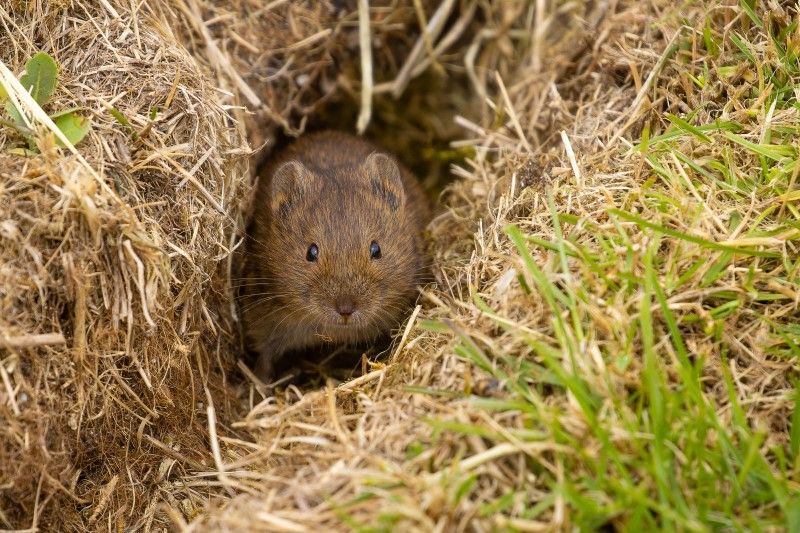Orkney vole

Status
Naturalised, common in Orkney
Population
Not known
Scientific name
Microtus arvalis orcadensis
Orkney voles are a subspecies of the common vole, Microtus arvalis, found in continental Europe but not on the British mainland. They look similar to field voles but are larger and have shorter, paler brown fur. Their ears are almost bald inside but furry at the top. Orkney voles are active both day and night, but especially at dusk and dawn. They run quickly and often stand up on their hind legs to scan their surroundings. They burrow shallow tunnel systems and small chambers in which to nest and store food. They return to their nests about every three hours to rest. They are good swimmers.
Orkney voles are an important food source for the birds of prey on the islands.
Head-body length: 9 – 12 cm
Tail length: Nearly a third of the body length
Weight: Up to 100g
Lifespan: Up to 18 months
Reproduction
Two to four litters of 2-12 pups are born between March and September and the young are weaned by about three weeks. Both males and females spend much time in the nest with the young, grooming them and retrieving them if they are dislodged.
Diet
Mainly grasses and herbaceous plants.
Habitat
Mainly grassy banks along roads and ditches and grazed pastures but also found on moorland and in bogs. They are not as reliant on long grass for cover as common voles, as they often burrow. They also use stones of old ruined buildings as shelter.
Predators
Hen harriers, stoats, kestrels and short-eared owls.
Threats
Habitat loss and fragmentation due to agricultural pressure.
Conservation status
GB Red List: Vulnerable (VU); Vulnerable (VU) in Scotland (absent elsewhere in Britain).
Population size and distribution
The population size isn’t known, but it is thought to be declining because of habitat loss and predation by stoats, which were introduced on to the Islands. Orkney voles are present on eight of the Orkney islands.
Did you know?
A slightly different island subspecies of the common vole (with pure grey fur on its underside) is present on Guernsey in the Channel Islands.
